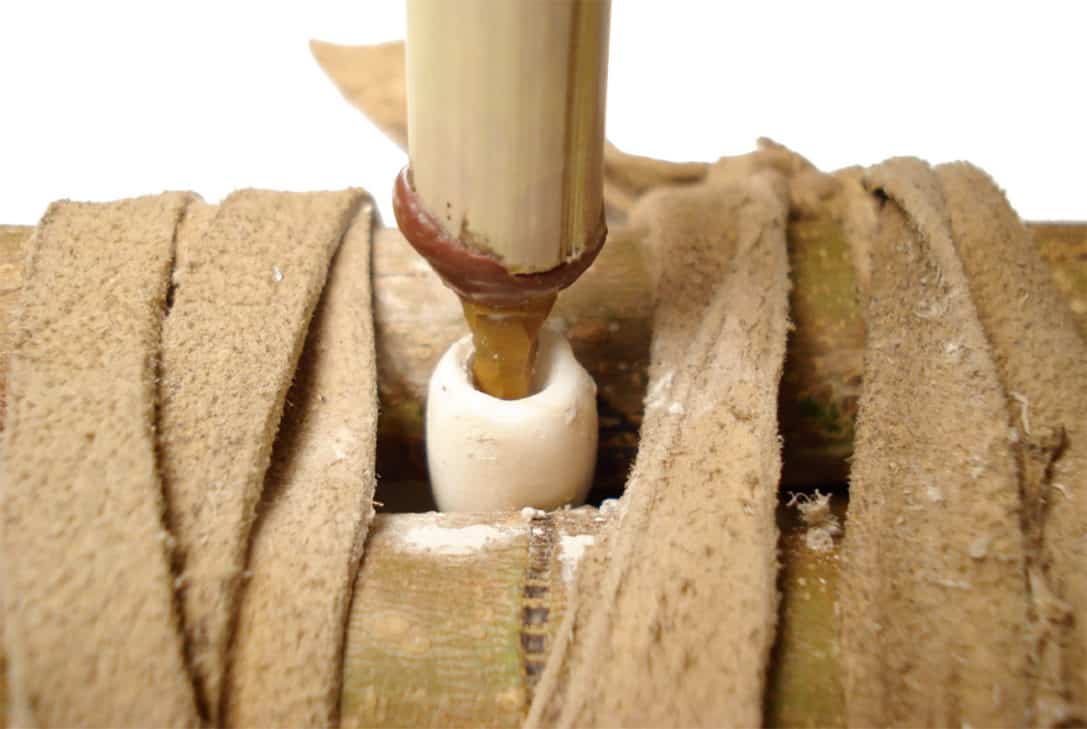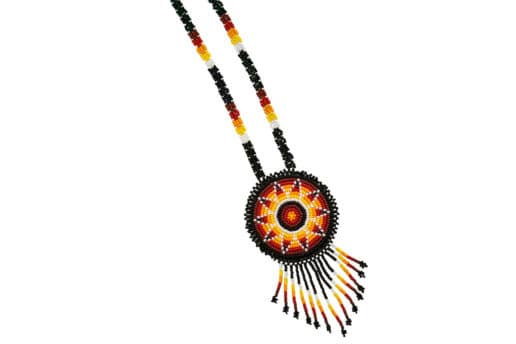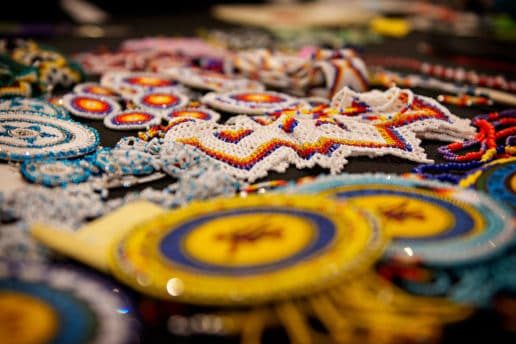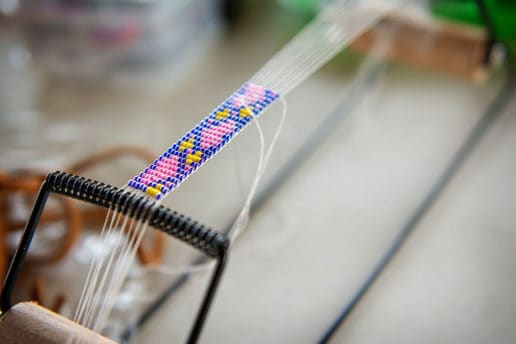Beading is a tradition Choctaw people have carried forward over many generations. Even though the types of beads and patterns have changed over the years, we still associate value and meaning with the beauty of beadwork and the painstaking labor involved in its creation.
Traditionally, Choctaw women were the primary beadworkers. They created masterful works that depicted images from Choctaw life and philosophy. One of the most traditional patterns found in Choctaw beadwork is the diamond, which represents the eastern diamondback rattlesnake. Our ancestors revered it as an animal of great strength and power, but it did not attack without provocation or warning.
Other patterns incorporate the starburst or sun-like radial designs. These images reference the Creator, who was associated with light, warmth and the life- giving properties of the sun.
Today, you will see both men and women carrying the tradition of beading forward to the next generation. Many patterns, colors and meanings are attributed to contemporary beadwork. Designs are as unique as the individual maker and often reflect personal tastes and values. We still appreciate and honor the link to the past with every creation.

Ancient Artistry
Many beautiful works stand as a testament to the hard work and talent of Choctaw artisans, past and present. One of the most important and personal accessories for both ancestral Choctaw men and women were shell beads. Our ancestors made beads from a variety of shell types, but the largest and most impressive beads were made from the columella of the Busycon welk shell. The ancient Choctaw word for these beads was oksup.
The making of columella beads required patience, skill and good tools. Southeastern Natives stopped making columella beads more than 200 years ago, and unfortunately, the few written descriptions of how they did it are incomplete. By examining archaeological materials left behind, however, it is possible to reconstruct this Indigenous technology.
The first step in creating a columella bead was to chip away the whorl of the shell with a sharp-edged stone. The whorl was separated and used for making gorgets and disc beads. The most impressive beads were made from the columella, the spiraling spine at the center of the shell. The columella was heated in a fire to soften the tough material. After cooling, ancient artisans carefully cut it into pieces using stone saws and ground the shell into bead shapes on sandstone.
The most difficult step in creating the bead was drilling the center hole for stringing. Holes were drilled by holding the beads in a tree branch vise and drilling it with a bow drill fitted with a carefully shaped tip of stone. Even with the bow drilling technique, it took hours to make a single columella bead. A necklace would represent weeks of work. Regalia with many strands could take hundreds of hours to complete.
European Influence
The labor intensiveness, compact nature and beauty of shell beads represented a standard of wealth, and they were often used in trade. Some sources say a single shell bead the length of a finger was worth four buckskins in trade value. Other sources cite that a full necklace was worth a horse, but it is uncertain how standardized the value of these beads were.
As Choctaw people established trade with Europeans, especially the French, the production of shell beads began to diminish. Trade for glass beads began to replace the difficult work of making shell beads by hand. By the 1700s, beads mass produced by Europeans flooded the market, all but ending the Native manufacture of columella beads.
Evolution of the Bead
As time went on, glass beads made in Europe began an evolution of their own. Early beadwork can often be dated by the materials, sizes and shapes of the beads used.
Styles of Choctaw Beading



